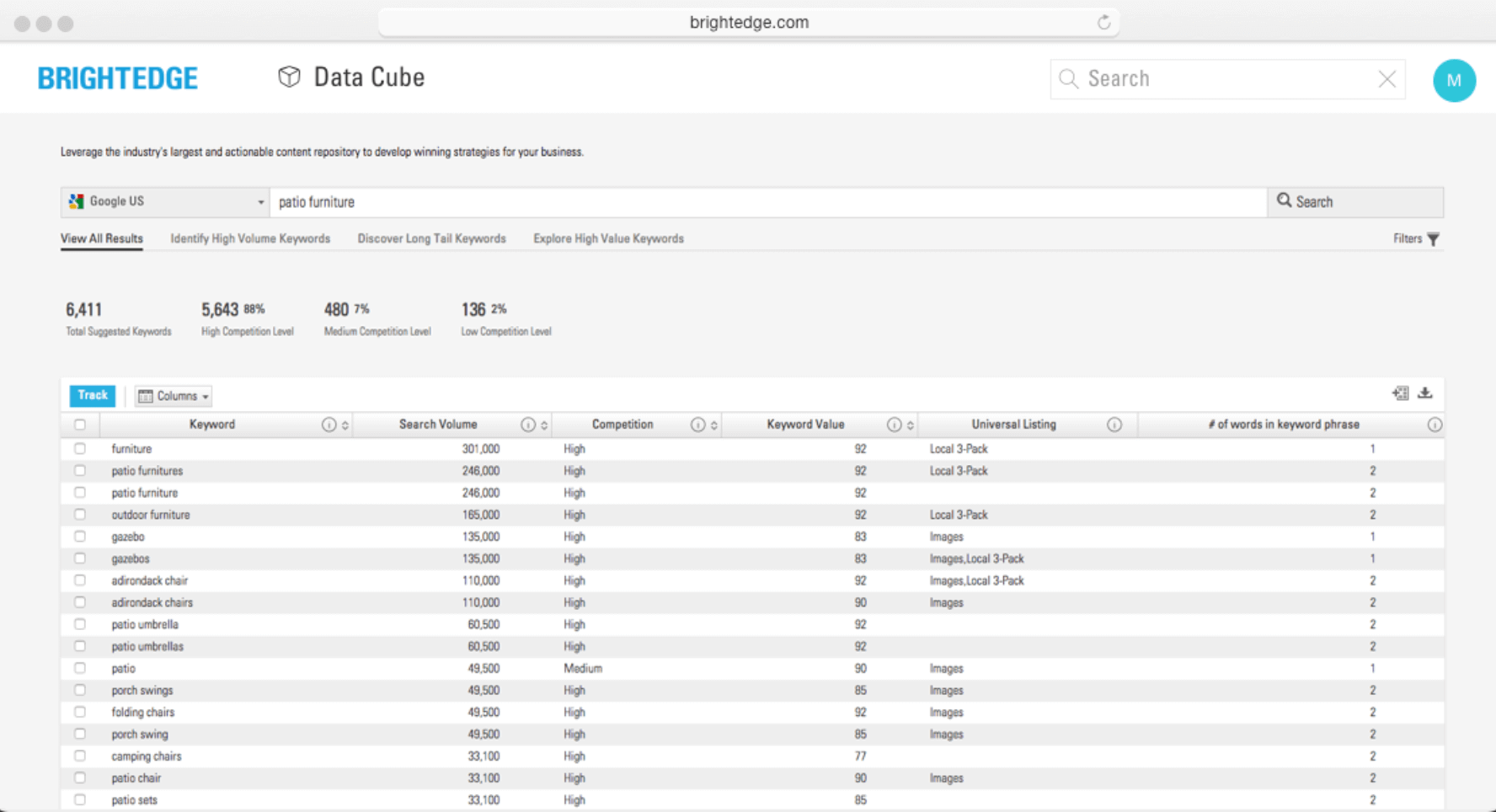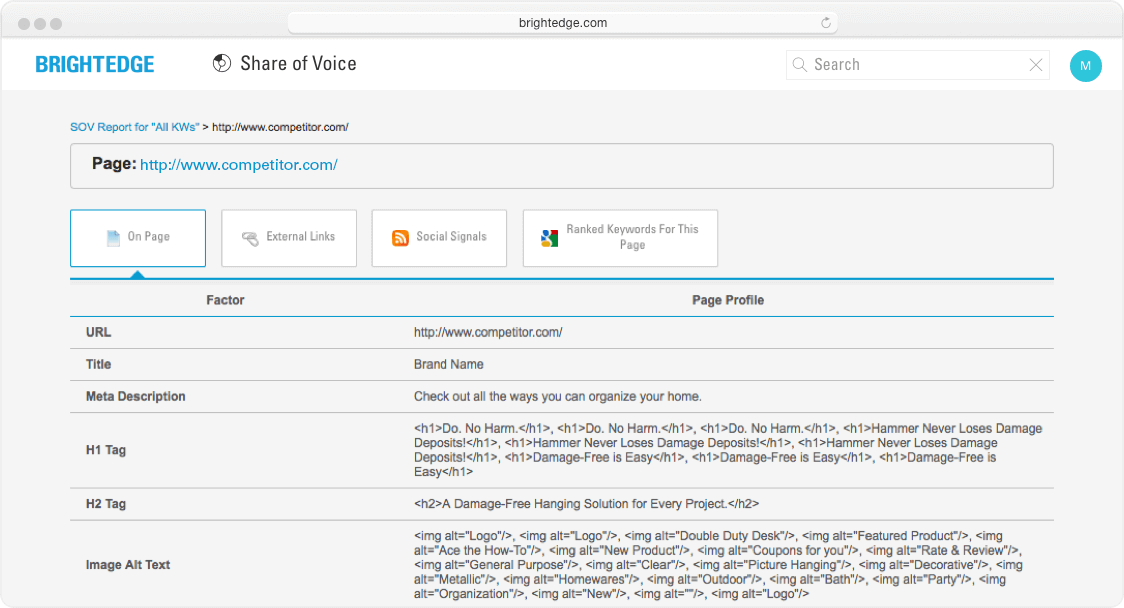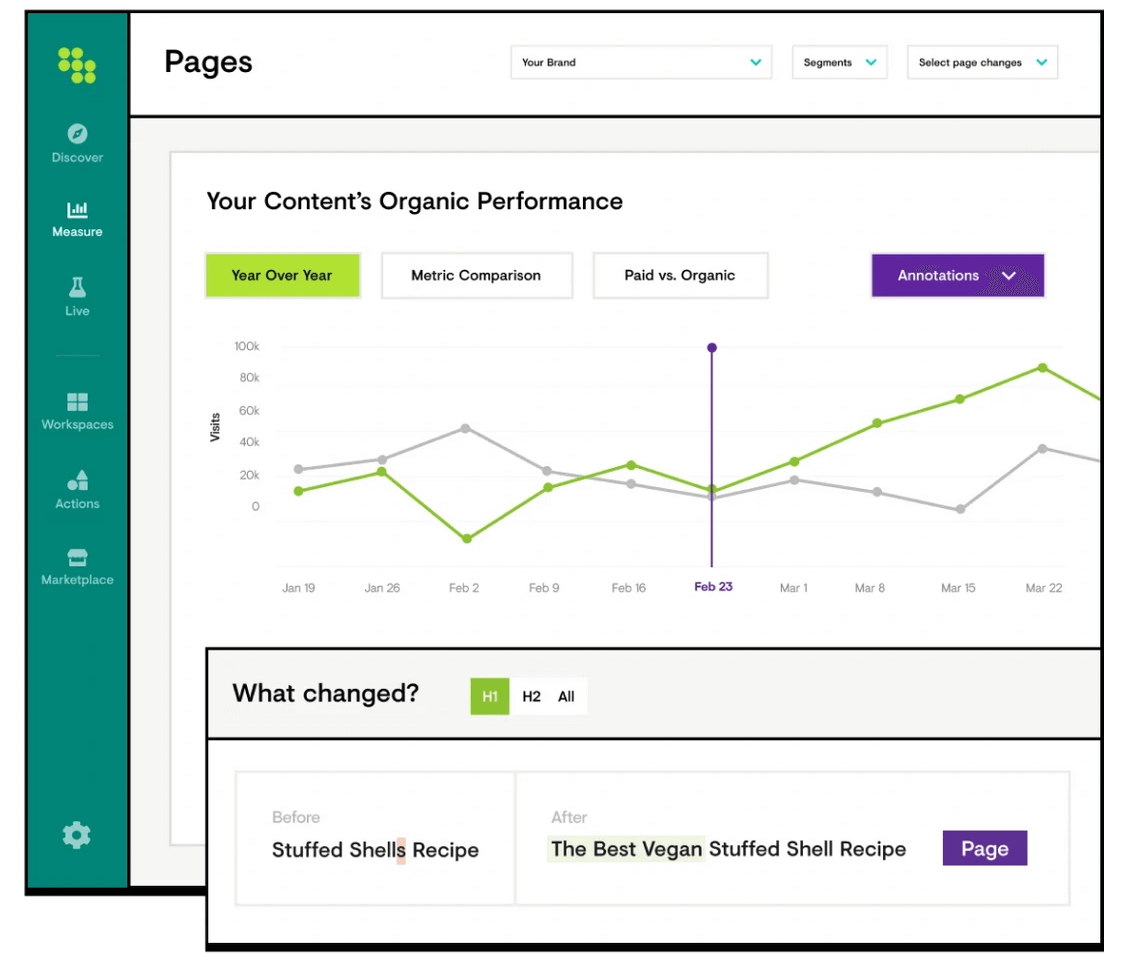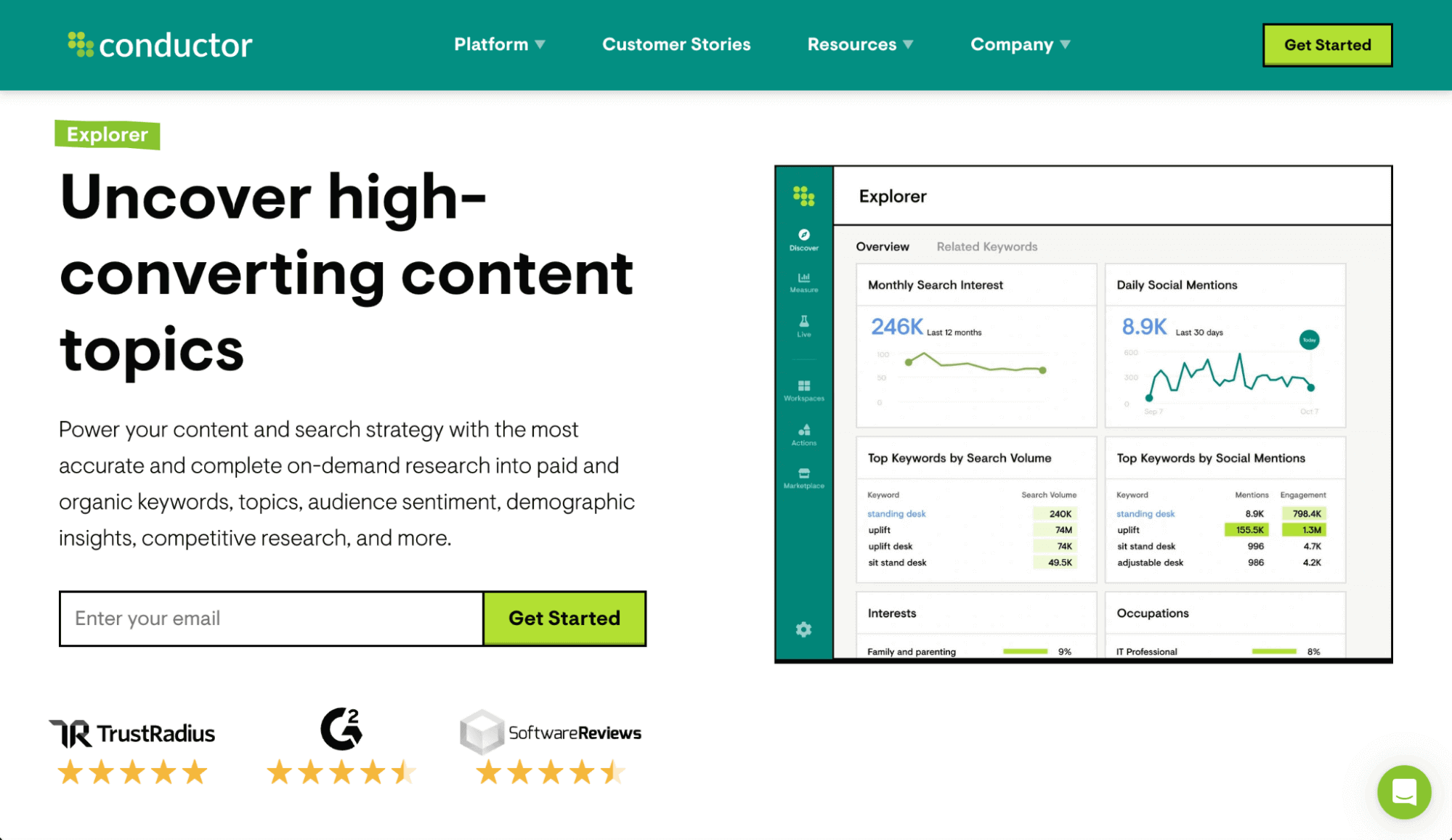BrightEdge vs. Conductor: Which Is Right for You?
Topic: SEO
Published:
Written by: Bernard Huang
The search engine optimization (SEO) industry is enormous – and for good reason. HubSpot’s 2023 State of Content Marketing study found that SEO was tied for third as the most popular content strategy for marketers, with 29% using a search-optimized website or blog to attract visitors.
The study also found that 88% of marketers who use SEO plan to either maintain or increase this investment. It’s been a cost-effective way to drive traffic for years, and there are countless tools that can help you make the most of it.
But with so many SEO optimization options out there, how do you decide which tools are the best fit for your company?
In this guide, we’ll take a deep look at two popular options and compare BrightEdge vs. Conductor.
We’ll go over the key features, advantages, and disadvantages and explore who can benefit the most from each program.
Differences between BrightEdge and Conductor
When you’re comparing BrightEdge vs. Conductor, you’ll want to review features carefully. Both are considerable investments, so choosing the option with the tools you need is important.
There are a few main differences between them, especially when it comes to keyword research, content creation, competitor analysis, and site auditing.
Keyword research

BrightEdge’s tool Data Cube offers keyword research (image source).
BrightEdge breaks its SEO software down into separate tools. For keyword research, you’ll use Data Cube. The tool shows what keywords your website ranks for and those your competition ranks for.
It also lets you search for keywords and offers alternatives. You can see each search term's search volume, competition level, and value.
Conductor also offers keyword research, but it takes a different approach. It uses built-in filters based on content type, so you can choose the results you want to see. For example, you can filter out videos or social media content if you’re only concerned with competing blog posts.
Conductor also focuses more on user intent, showing demographics and other insights to help you understand the reasons behind a search.
You can combine either tool with Clearscope's Topic Explorations tool which can help you come up with ways to use those keywords and will show you the type of questions people ask when searching for the terms.
Content Creation

Conductor’s Content Guidance tool (image source).
When it comes to content creation, Conductor is the clear winner between the two.
BrightEdge focuses on search engine results pages (SERPS) and data. While it does highlight which pages are bringing in visitors and will make suggestions based on the data, it doesn’t offer much else.
In contrast, Conductor’s Content Guidance tool offers recommendations, from post length to page speed and even schema recommendations. It will indicate which secondary keywords you should target and highlight how much more traffic you could gain if you ranked higher. The tool also helps you create content briefs based on your keyword research.
You can always supplement with Clearscope, which can help with your content workflow. You can create outlines, create reports with useful terms you’ll want to include on your page, and integrate it with Google Docs while you’re writing your blog posts to keep everything focused.
Competitor analysis

BrightEdge has a few tools that help with competitor analysis. (Image source)
BrightEdge offers competitive analysis with Instant, an AI-powered tool or Share of Voice. These programs work for general search engines and platforms like Amazon and YouTube. The level of detail they provide helps BrightEdge squeeze above Conductor in this category.
If you want a tool that can help you see how you’re performing compared to your competitors, BrightEdge’s dataset will break down multiple ways you could improve. You can learn how fast your competitor’s pages load, how they structure their posts, and even select a specific date range to analyze.
Conductor also offers competitor analysis in its Explorer feature. The tool will help you determine which keywords are trending on social media and who’s searching for them, but the level of detail isn’t anywhere near what you get from BrightEdge.
Site audit and health

Conductor focuses on how you can continue to improve (image source).
Both marketing platforms offer site audit options. With BrightEdge’s Site Report tool they have a recommendations section, which will give you ideas for how to optimize existing content. You can review content performance by channel and get specific page recommendations.
Conductor’s Platform also offers site auditing, with analyses that show which pages have issues that need addressing. It also offers A/B testing so you can compare different versions of a page and improve its performance.
A content audit is vital for keeping your blog posts and other pages at the top of SERPs. Let’s say you identify a couple of pages that are slipping in rankings using Conductor. Then you can use Clearscope to generate a content report for the topic. Using the structure, word count, and term recommendations, you can make changes to your posts to make sure you’re meeting the searcher’s expectations.
Do these SEO tools handle everything?
When comparing BrightEdge vs. Conductor, you’ll see each tool offers detailed data and functionality.
BrightEdge has a lot of real-time data and analysis, but it’s missing the human element behind search intent. The company offers dozens of separate tools with hundreds of metrics, and it can feel overwhelming at times trying to figure out what to do with all that data.
Meanwhile, Conductor tries to explain the who and why behind organic search, but in doing so, misses out on some key features like backlink analysis. It’s easier to navigate but lacks the depth of BrightEdge.
Both programs have a bit of a learning curve as well. With so many metrics to review, it will take a while to learn how to make the most of either one.
While BrightEdge and Conductor are great for researching new topics, neither can make sure your content is optimized to the fullest when used alone. Both need support from an enterprise-level SEO tool like Clearscope.
❝While BrightEdge and Conductor are great for researching new topics, neither can make sure your content is optimized to the fullest when used alone. Both need support from an enterprise-level SEO tool like Clearscope.
Bringing it all together with Clearscope
Regardless of who wins your BrightEdge vs. Conductor match-up, working with a user-friendly keyword research tool like Clearscope is a great way to enhance your SEO strategy. Enterprises like YouTube, Adobe, and IBM use Clearscope to help optimize content, both when it’s first created and when it needs refreshing.
In addition to researching new topics, you can run a content audit on your existing blog posts to see how older content is performing and if you need to update anything.
You can also keep a content inventory to monitor pages for performance and see how your posts do over a period of time. Track different queries, and set goals as you optimize each page.
Next, we’re going to go into a bit more detail about what exactly BrightEdge and Conductor are.
What is BrightEdge?

BrightEdge offers SEO tools for enterprise-level customers (image source).
BrightEdge is an enterprise-level SEO marketing company that offers a number of tools to help businesses with content marketing and forecasting. The company was founded in 2007 in Silicon Valley and now has offices around the globe.
It offers a host of SEO tools, including ContentIQ, an SEO website audit tool, and Data Cube, which offers keyword research.
Advantages
BrightEdge’s options are comprehensive. The company showcases 14 products on its website, with a tool for nearly everything related to SEO and digital marketing.
A reviewer on G2 says, “I really like how the platform can offer both high-level and in-depth analytics, and you're able to really personalize what you want to see.” There are many reports to choose from, so you can get both a general view of your entire domain and detailed page reports.
The tool also integrates with Adobe and Google as well as other databases to give you a better understanding of your overall web performance.
Disadvantages
BrightEdge isn’t transparent with its pricing. It specializes in enterprise solutions, but that comes at a cost. One Capterra reviewer notes, “For what you are charged per year, it is quite a hefty amount, and I'm confident that I could have achieved the same ROI on organic traffic from a cheaper tool.”
The product also comes with a steep learning curve. While the SEO platform offers tons of reports and research, figuring out how to navigate takes considerable time.
Plus, everything is segmented into separate programs, so you’ll have to learn what each one does and which one you’ll need for each specific metric or research tool.
What kind of companies use BrightEdge? Who is BrightEdge a good fit for?
BrightEdge is a great choice for enterprise corporations that have a large marketing budget and dedicated SEO specialists. The product can help you understand keyword rankings, technical SEO, and how your content performs.
While good for those looking at the technical side of your SEO optimization, BrightEdge isn’t focusing on creatives so much as they are data.
You'll be in good company if you’re willing to pay for it. Corporations like Microsoft, Adobe, and Meta use BrightEdge.
We're tackling the alternative next if you’re still debating BrightEdge vs. Conductor.
What is Conductor?

Conductor is an enterprise-level SEO platform (image source).
Conductor is also an enterprise-level SEO platform. It was founded in 2006 in New York, and offers an attractive alternative to BrightEdge. It also regularly publishes studies on SEO and search behavior. In one 2023 report, they found organic search drove an average of 36% of all web traffic to enterprise companies.
❝In one 2023 report, they found organic search drove an average of 36% of all web traffic to enterprise companies.
It hosts a suite of content creation tools, from content briefs to artificial intelligence (AI) recommendations. Everything is conveniently accessible from one dashboard, and the navigational menu is pretty intuitive.
Advantages
Conductor is an all-in-one SEO solution. The company tries to position the platform as a comprehensive option with an easy-to-use interface. You might not get quite the detail you would with BrightEdge, but you’ll be able to access all of the features from one dashboard. Plus, it’s easy to comprehend visually.
A G2 reviewer says, “We can easily compare the rankings with up to four competitors in one single view along with options to check if we are ahead or behind our competitors.”
It also offers more integrations, including tools like Semrush, Google, and Jira.
Disadvantages
While it’s a good overall choice, many reviewers note that Conductor is missing features that even lower-priced options offer.
A G2 reviewer mentioned, "If I want backlink data or an estimate of the paid value of organic traffic, I have to go elsewhere. The content optimization features are novel, but when I have directed others to use them, they often end up with less than stellar results.”
Conductor isn’t upfront about pricing either. As with other enterprise-level options, it only provides pricing as a custom quote, but reviewers share that it isn’t cheap.
What kind of companies use Conductor? Who is Conductor a good fit for?
Conductor is great at creating visual representations of data, so it’s a good option if you’re having trouble explaining your SEO performance to your C-suite. Everything gets a graph or pie chart, which can help you understand your progress better.
The program also offers more tools centered around content creation and understanding your audience. If you need more help coming up with content briefs or use to AI come up with a list of recommendations of what to do next, Conductor has you covered.
Like BrightEdge though, Conductor also works best as part of a larger enterprise SEO toolset.
Final thoughts: BrightEdge vs. Conductor — Picking the right SEO tool for you
Figuring out the right SEO tool for your enterprise-level company is an important decision.
When comparing BrightEdge vs. Conductor, you’ll see that there are dozens of features and options to consider. Each program has its own specialty, too. So you’ll want to figure out which option is more likely to help address your company’s unique concerns.
But it’s not just about comparing competitors and checking your rank tracking on a flashy graph either.
You need to make sure your content is answering the questions your searchers have. Clearscope helps you do this with keyword research, content optimization, and content monitoring to help you organize everything for both bots and humans.

7 On-Page Optimization Tools to Create & Update Site Content
Our guide compares the best on-page optimization tools to research keywords, write SEO-optimized content, and improve rankings in Google search results.
Read moreWhat are the best content optimization tools?
In need of a content optimization tool? Check out our guide of the best content optimization tools on the market.
Read moreInformation Gain in SEO: The Guide to Convincing Yourself, Team, and Clients to Rethink Current Strategies
What is information gain? Why is everyone talking about it? This is the guide you need to persuade yourself, your team, and your clients to reassess your current strategy to include info gain in your content.
Read more